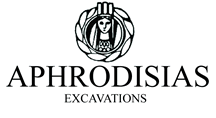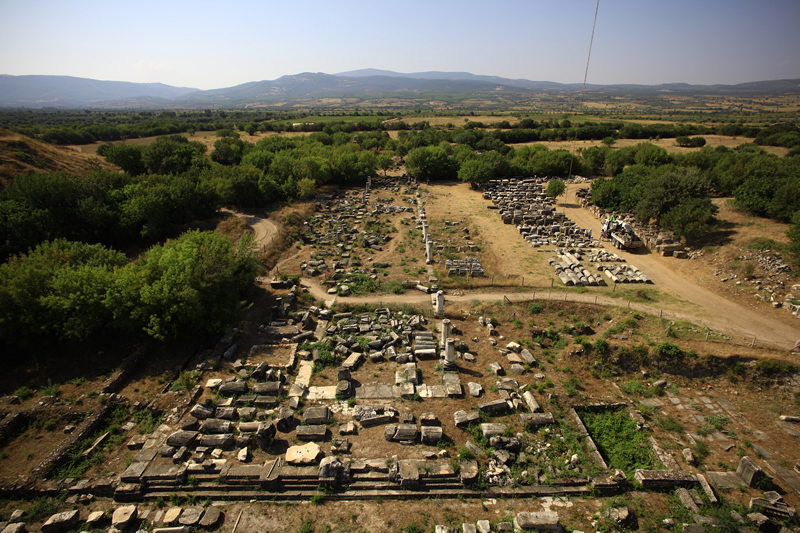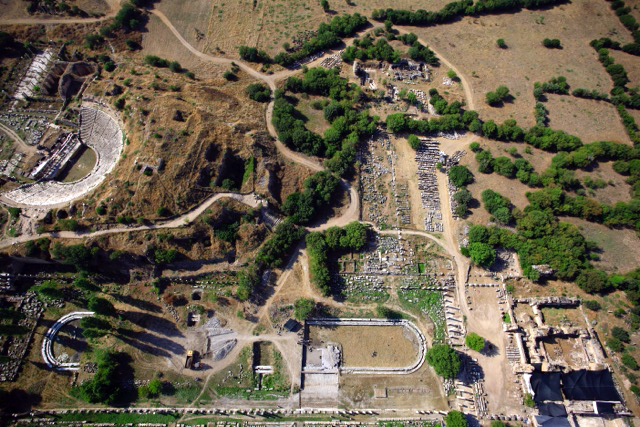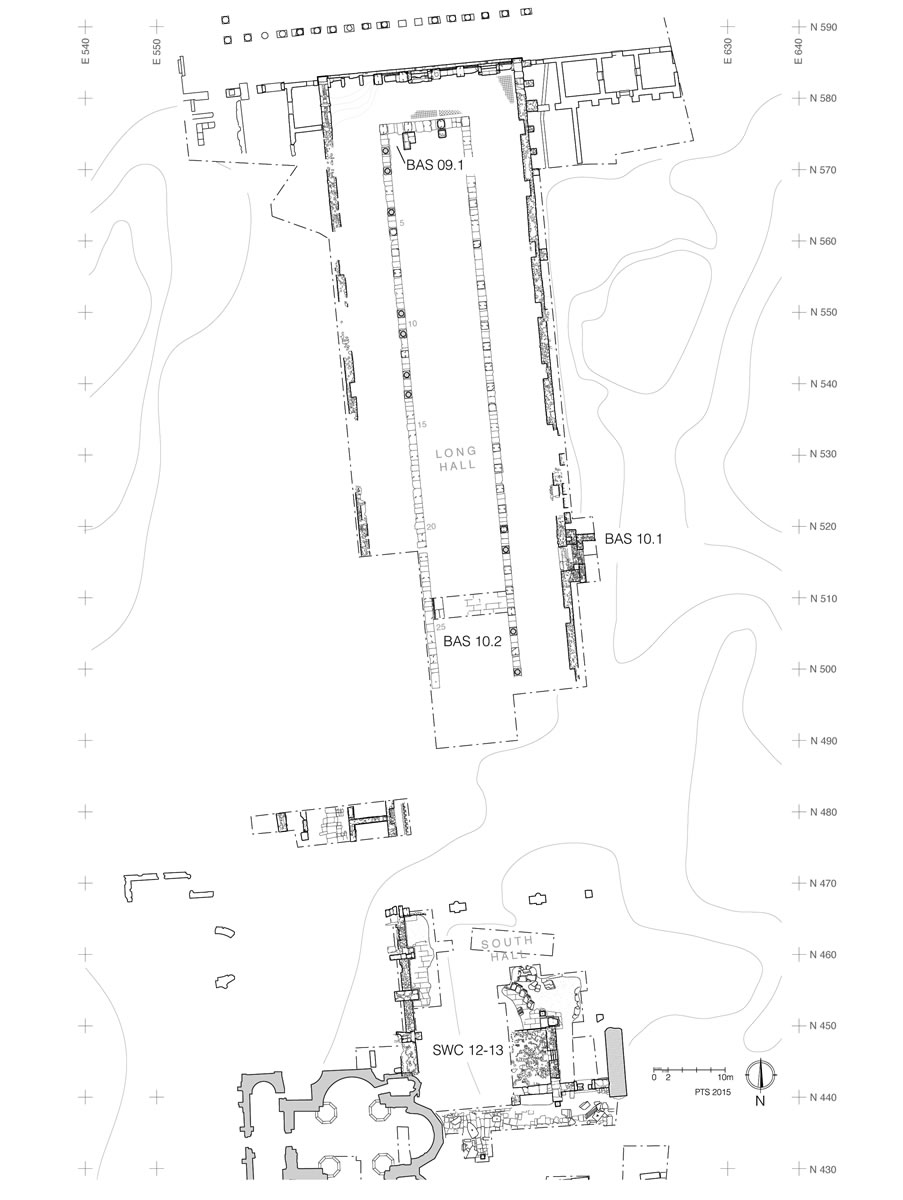Civil Basilica
The Civil Basilica was a long, three-aisled public hall (c. 145 X 30 m) that opened off the Urban Park at its south-west corner. Its architectural decoration and a surviving part of its dedication suggest it was completed and dedicated in the late first century AD. The building was entered on its short end, which opened onto the Urban Park. The entrance wall was an elaborate, engaged columnar façade closed by extensive marble panelling (see below). It was on this panelling that Diocletian’s famous Edict of Maximum Prices and his Currency Edict were later inscribed, in Latin, in AD 301.
The interior was divided by two-storeyed colonnades (with Ionic below Corinthian orders) into two side aisles and a central, paved aisle. The interior culminated in a grand south hall (c. 20 X 30 m and over 10 m high), like that of the basilica at Aspendos. The inside walls of this south chamber were articulated with elaborate columnar architecture. The upper storeys of the colonnades in the central aisle were fitted with sculptured reliefs that formed a balustrade. These reliefs feature a variety of decorative motifs as well as scenes of local mythology, including one of Ninos, a legendary founder of Aphrodisias.
The building was restored by a governor named Flavius Constantius in the mid-fourth century AD, when mosaics were laid in the side aisles. It may have been in connection with this restoration that two old and imposing statue monuments were moved here and set up at the north end of the building, facing down the nave. One was a colossal figure of a draped goddess, the other was an extraordinary sculptural group representing the Trojan prince Troilos pulled from his horse (made of blue-grey marble) by the premier Greek hero Achilles.
The anastylosis of the four colossal double-columns and their entablatures at the entrance to the Civil Basilica is part of a larger project to enhance and partly restore the front of this huge public building. The project includes the presentation of the complete text of Diocletian’s Edict of Maximum Prices (in Latin, Turkish, and English) on panels installed on the line of the building’s side walls. The project is sponsored by Murat Ülker and pladis.









